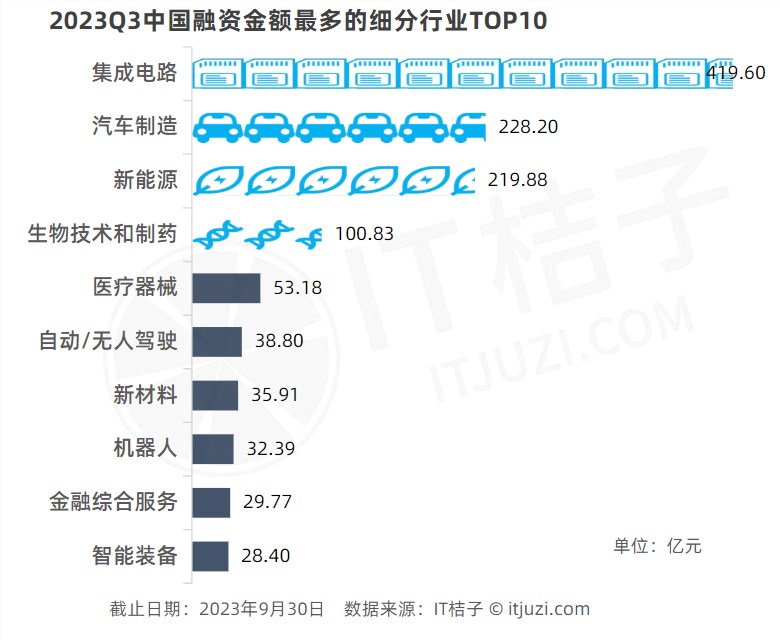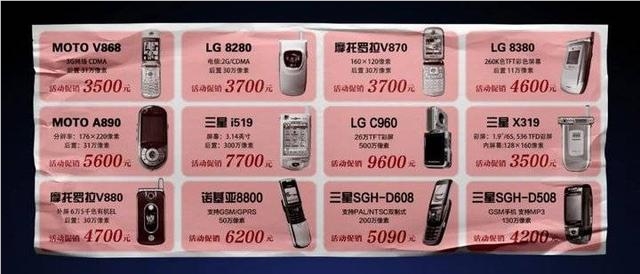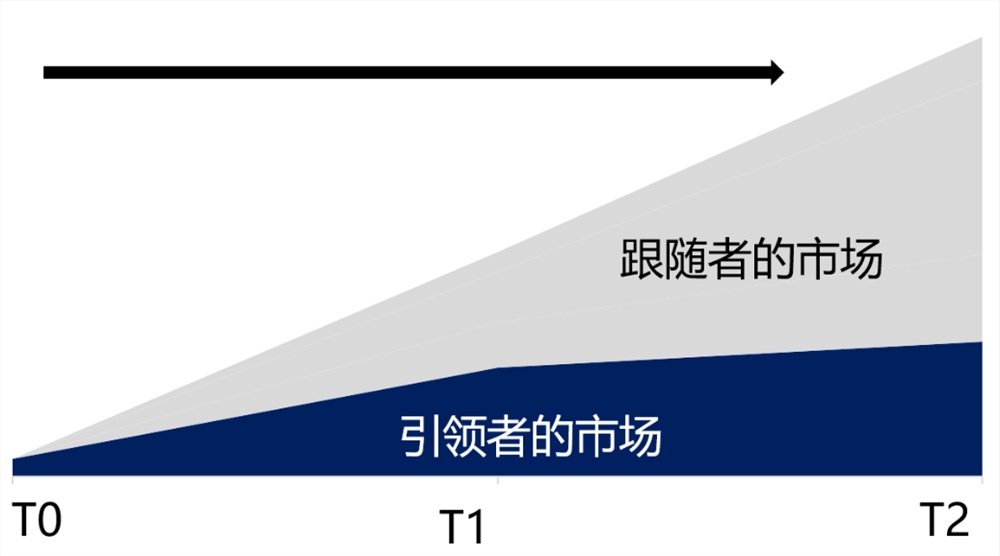AI Large Models Are Getting Closer to Each of Us
-
OpenAI has laid its cards on the table. No longer hiding its edge, it revealed an annual revenue of $1.3 billion in mid-October, a 4500% year-on-year increase, far surpassing the initial $200 million projection.
Domestically, capital and public attention are increasingly focused on geopolitical shifts, semiconductors, and automobile manufacturing.

△ Q3 financing industry leaderboard, large models temporarily fell off the list
They say OpenAI dominates globally, while the momentum for domestic large models has dissipated.
I. The Order of Change
The paradigm of history remains unchanged—leaders are replicated, advantages are neutralized in offense and defense, and the competitive landscape shifts to the right. Over a decade ago, the mobile phone market belonged to Nokia and knockoffs.

△This was China's smartphone market over a decade ago.
"Four or five years ago, who used domestic phones in the mobile industry? Domestic phones were synonymous with knockoffs. It wasn't just the mobile industry—almost every sector faced similar challenges. It wasn't just phones; even household TVs were dominated by Sony, Samsung, and Sharp." — Lei Jun, 2017
In 2010, the stunning iPhone4 was released, and within two years, Apple firmly secured its leading position. By 2017, Huawei, Xiaomi, OPPO, and Vivo (collectively known as 'HuaMiOV') had each carved out their share as followers, stabilizing the domestic market landscape dominated by Apple, Samsung, and these domestic brands.
The historical pattern has hardly changed. Pioneers emerge early as innovators, creating barriers that competitors struggle to break. However, during the industry's expansion phase, the market becomes large enough for newcomers to seize opportunities and secure their survival space. As pioneers are replicated, their advantages gradually diminish in the face of competition. Without introducing new, disruptive products that others cannot anticipate or replicate, the competitive landscape inevitably shifts to the right.

△Natural changes in market size and structure | Theoretical model
Shifting to the right means the overall market grows, but the pioneer cedes some of its share.
The competition in large AI models at the technical performance level has quietly begun shifting to the right. The speed at which models are catching up in performance is accelerating. Google's PaLM2 announced that some of its results surpassed OpenAI's GPT-4. There are also reports that Sam Altman might have to rush the release of a new multimodal model, Gobi, to counter Google's planned multimodal model, Gemini. Domestic large models, playing the role of followers, also have significant room for growth and development. Beyond performance, the next opportunity for large models lies in vertical applications.
The competition in vertical applications has just begun. Vertical applications are carefully designed with implementation in mind, integrating both front and back-end processes into the product. As a result, they offer greater value to customers than single-interface services and hold long-term potential. The application layer also presents an opportunity for domestic large models to overtake, much like how the iPhone defined the mobile internet era, but it was Chinese companies that popularized mobile payments and short videos globally.
In this orderly transformation, swift action and adaptation are crucial. For a company, missing the wave of change can lead from industry leadership to demise in just six months to a year. For individuals, the winds of large models are just reaching us—will you seize the opportunity, take control, or hesitate and ultimately compromise?
Today's world is one of constant change. The greatest danger is not the turbulence itself, but continuing to operate with outdated thinking.
2. If You Could Take Control, Who Would Compromise?
A report from Zhaopin once stated: "In 2019, white-collar workers averaged 3-20 hours of overtime per week, with the most overworked exceeding 20 hours weekly." While we lack updated data to compare the present with the past, the growing online backlash against overwork and exploitation suggests that excessive overtime, especially when involuntary, shows no signs of abating.
Yet, too many people have no way out, no alternatives.
A past dialogue with Luo Yonghao was quite interesting. When asked, "The media claims that the Hammer M1 represents your compromise. Do you agree?" he responded, "The media likes to say I compromised because it makes for a good story and satisfies certain psychological needs. When four or five media outlets simultaneously asked about compromise, I got a bit irritated, which led to many clickbait headlines. Later, when they said I compromised, I just agreed—'Yes, you're absolutely right.' Whether it's catering to public demand or balancing product ideals with commercial realities, our ultimate goal is to guide people's understanding of a good product. But if they want to call it compromise now, that's fine."
It's both amusing and frustrating. If one could have control, who would choose to compromise?
When people feel in control of a situation, neurotransmitters like endorphins are released, creating a sense of pleasure and relaxation. Conversely, when people feel out of control, they experience anxiety, stress, and other negative emotions, which inhibit the release of these happiness-inducing chemicals.
In the workplace, a lack of sufficient manpower or delays in progress can make people feel out of control. Fragmented tasks and forgotten arrangements can make people feel out of control. Focusing only on details without seeing the bigger picture can make people feel out of control. Failing to grasp the key points in communication can make people feel out of control. Being unable to discern useful information or the right approach to getting things done can make people feel out of control.
Today, the "three essentials of the workplace"—laptops, phones, and tablets—are enough for us to create reports, multimedia files, Gantt charts, BI dashboards, and PERT diagrams with their tiny data points. But sometimes, during moments of emotional lows, it feels as if we ourselves have become those binary data points.
The "three essentials of the workplace" are our tools of production, akin to a craftsman's loom. They are not a swordsman's blade or a young traveler's horse—they do not directly bring a sense of control in the workplace. Even if generative AI features are integrated into software as copilots, how exactly should these models bring about change?
The issues mentioned above essentially stem from insufficient execution efficiency and the inability to discern key insights through information and contextual understanding. To solve this problem, one must penetrate the fog of information and grasp the essentials.
As a leading domestic large model, iFLYTEK's suite of office tools (Smart Office Notepad, Smart Recorder, Translator, and iFLYTEK Writing) has integrated the Spark large model, updating a series of capabilities: automatically organizing redundant content and extracting key points; generating meeting minutes based on transcriptions and handwritten notes; compiling action items into schedules during meetings; and directing AI to draft content through dialogue. By delegating tedious and energy-consuming tasks to iFLYTEK's office products, which simplify and distill text, helping us organize information and see interconnected content, we can better articulate ideas, communicate effectively, and make sound judgments from a higher perspective. Adopting an attitude of focusing on the essentials allows us to see the path ahead more clearly and better steer our direction.
Third, the key to applying large models in vertical applications lies in prioritizing users.
In recent years, many technological trends have emerged, from inception to rapid growth, with some already receding, VR being the most typical example. While it's often said that traffic has become more expensive, products are increasingly competitive, and business is tough, the real key is often overlooked: whether the product delivers value to users. Respect users, don't exploit them; pursue value for users, not self-expression.
Pursue value for users. Taking the workplace as an example, modern workplaces are characterized by mismatched supply and demand—there’s an abundance of labor but fewer job openings. Conversely, there are many challenging tasks but a shortage of individuals who can identify key points and deliver high-quality output. For individuals, the underlying need is to transition from being buried in routine work to developing insights into solving complex problems, seeking resources and methods to address issues, and taking control of their career paths. Many recognize this issue, but as finite beings, they spend too much energy on basic tasks like collecting, searching, recording, and summarizing. The deeper pain point is the resulting loss of control—being too immersed in details to articulate the business logic or identify milestones for validation.
iFlytek Office targets these specific needs. In the previous AI era, its value proposition was 'speech-to-text transcription.' In the AIGC/large model era, powered by the Spark model, iFlytek Office now focuses on 'key point extraction,' solving issues like illogical machine-generated drafts, labor-intensive revisions, and the loss of critical insights in routine meetings and documentation—ultimately returning control and initiative to users.
Discussing physical attributes without considering the core is meaningless; physical attributes must serve the core value. Take the meeting minutes feature of iFlytek Office X3 as an example. Tests show that jotting down key points on the e-ink screen during a meeting versus not doing so results in entirely different meeting summaries. The version with handwritten notes is significantly more complete. Far lighter than ultrabooks or tablets, the Office device starts recording and annotating immediately upon opening, with no extra steps, making it ideal for meeting and communication scenarios. Integrating large model capabilities into vertical hardware isn’t about empty talk on physical attributes—it’s about finding the most suitable form for functional value.
Discussing restructuring without considering user frequency becomes a cliché. For large models to penetrate the consumer market, adaptability and fit matter more. Many conversational assistants in web pages or office applications see daily active users (DAU) of less than 1% of the app’s total DAU, indicating limited usefulness in solving user problems—making commercialization difficult. Microsoft, however, stands out: Office 365 Copilot is priced at $30/month, twice as expensive as the core product, and despite not being officially launched, has already garnered millions in subscriptions. Beyond novelty, its success stems from Office’s high-frequency editing and creation assistance, which aligns perfectly with the product, ensuring its vitality.
Conclusion
As the wave of large models in vertical applications draws nearer, it offers us more choices, enabling us to focus on what’s essential, filter out noise, and get closer to the core of issues—identifying the fundamental or critical aspects of any problem. Regardless, professionals who take their work seriously now hold a microcosm of this transformative era in their hands. Don’t miss it.
